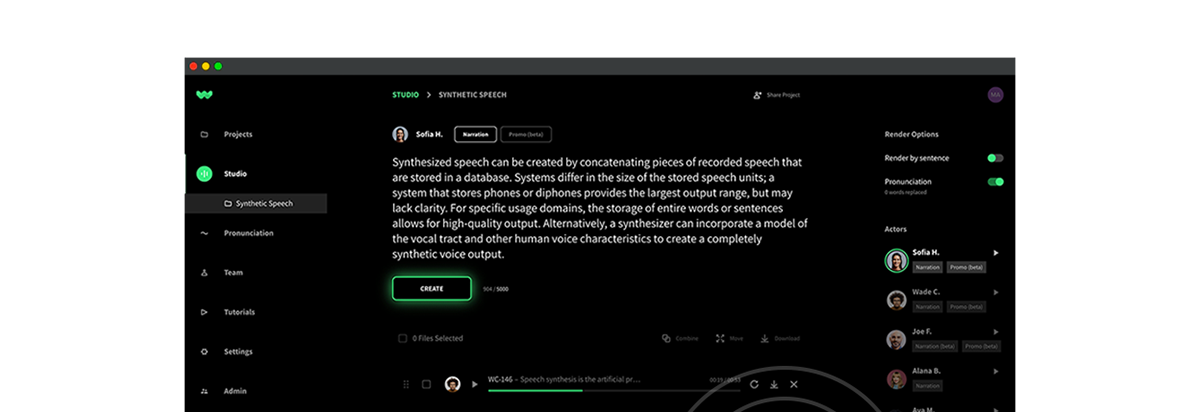Audio by Lorenzo D. using WellSaid Labs Creating dynamic presentations is crucial for capturing and maintaining your audience’s attention. In fact, 70% of marketers believe that presenting interactive content is
Audio by Jay S. using WellSaid Labs AI voice technology has entirely changed how we interact with digital content. From virtual assistants to immersive audiobooks, the capabilities of AI voice
Audio by Isabel V. using WellSaid Labs How many times do you interact with devices and content on a daily basis? If you’re like most, a ton. And more interactions
Audio by Vanessa N. using WellSaid Labs In this era of relentless digital innovation, we’re no longer just spectators but participants in an AI-generated world where our own voices and
Audio by Owen C. using WellSaid Labs This post is from the WellSaid Research team, exploring breakthroughs and thought leadership within audio foundation model technology. No one sums up the
Audio by Damian P. using WellSaid Labs At the heart of today’s technological renaissance, Generative Artificial Intelligence (AI) stands tall as a primary driver of innovation. This technology uses advanced
Audio by Charlie Z. using WellSaid Labs Ever feel like the digital world is zooming by while you’re just trying to catch a WiFi signal? We’re in an electrifying age
Audio by Jack C. using WellSaid Labs In an era where our digital avatars often speak louder than our physical selves, the curtain rises on a new act, or better
Audio by Alan T. using WellSaid Labs Who remembers Moviefone? 🙋Ah, the dial-up wizard of the cinema world. Interestingly, it used one of the tech world’s darling of the decade,
Audio by Patrick K. using WellSaid Labs From the intimate rustling of paper pages to the soothing cadence of a narrator, books have undergone a melodious metamorphosis into audiobooks. Today,
Audio by Tobin A. using WellSaid Labs Since time immemorial, ethics have acted as society’s compass, guiding civilizations through the murky waters of moral dilemmas. And in our digital age?
Audio by Joe F. using WellSaid Labs From deciphering dinner recipes to finding that oddly specific 80s song we can’t get out of our heads, AI’s taken the co-pilot seat
Audio by Abbi D. using WellSaid Labs Dive into an extract from our white paper, Make Generative AI Work For You, Using Digital Scalable Voice. Here, we explore the intricate dynamics
Audio by Ava M. using WellSaid Labs In our current tech-driven world, the language of innovation often revolves around three magical letters: API. But what do these letters signify, and
Audio by Donna W. using WellSaid Labs Imagine a world where you could perfectly replicate your voice, down to the slightest inflection or pausing patterns. No, this isn’t a new

© WellSaid, Inc. 2024
All rights reserved.